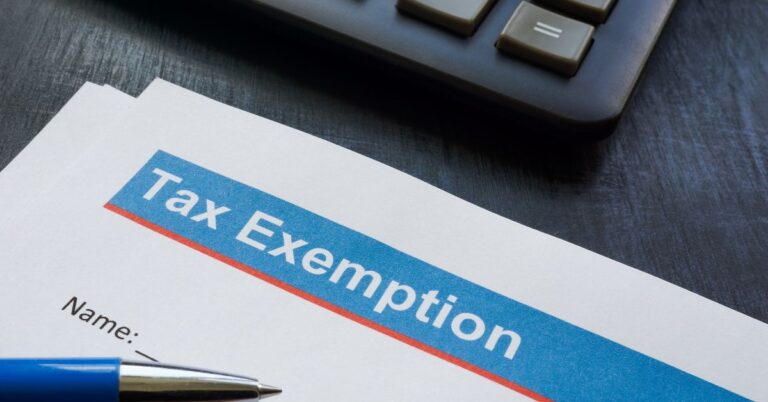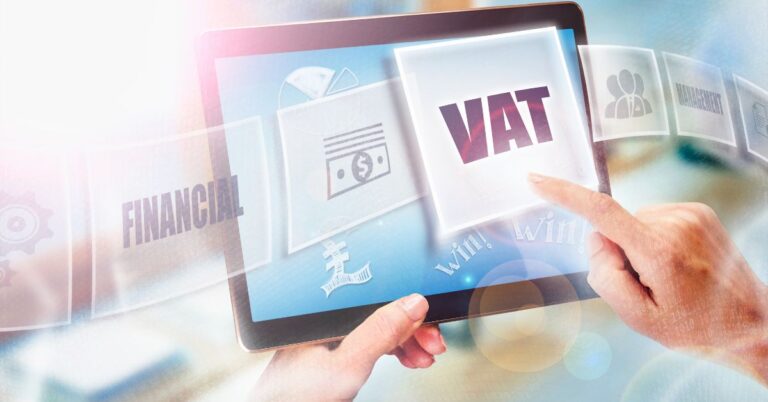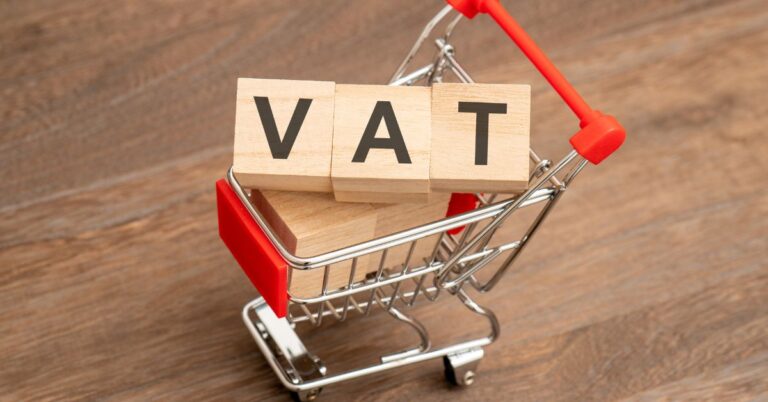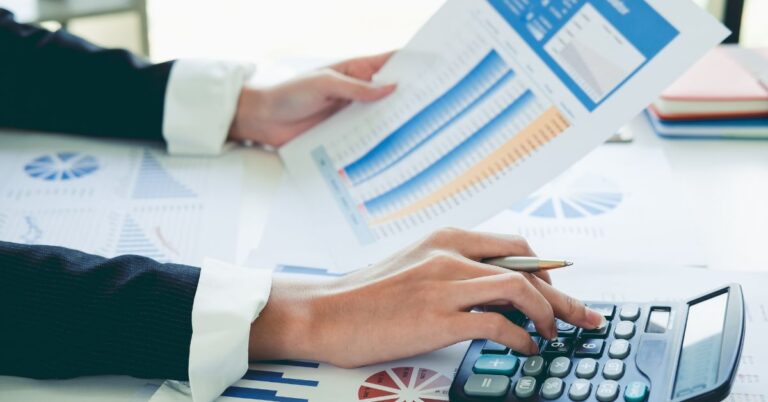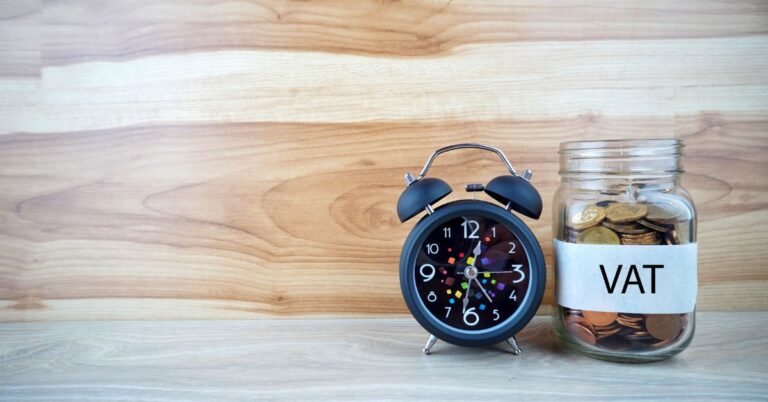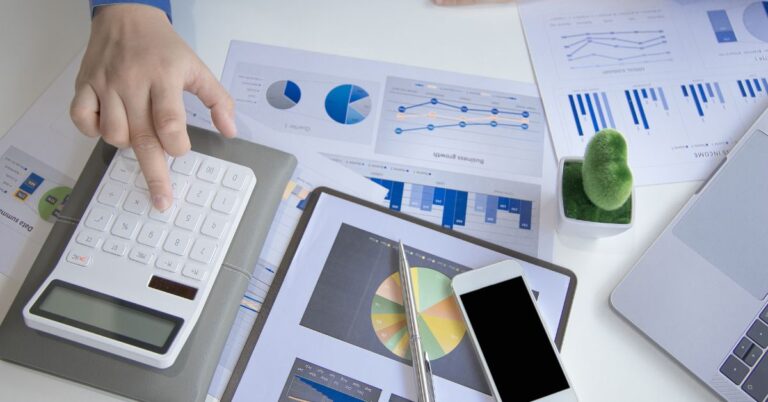What is the VAT Reverse Charge to Customers?
VAT reverse charge is a system where customers pay VAT directly to HMRC instead of suppliers adding VAT to invoices. Customers receive invoices without VAT but must calculate and pay the tax themselves through their VAT returns.
This system applies to specific transactions including cross-border services, construction work, and high-risk goods like mobile phones. The reverse charge prevents VAT fraud by removing the supplier’s ability to collect VAT and disappear without paying HMRC.
When does VAT Reverse Charge Apply to Customers?
VAT reverse charge applies when customers buy services from overseas suppliers, construction services within the UK, or specified high-risk goods. The system covers three main scenarios:
Cross-border services: Services purchased from businesses outside the UK trigger reverse charge. Examples include legal advice from EU lawyers or IT support from US companies. If you’re importing goods from overseas, you may also need to understand how to calculate import VAT in the UK.
Construction industry: Since March 2021, construction services between VAT-registered businesses use reverse charge. This covers building work, repairs, and related materials.
High-risk goods: Mobile phones over £5,000, computer chips, gas, electricity, and emission allowances require reverse charge between VAT-registered businesses. For online sellers, you should also be aware of whether you have to pay VAT on eBay UK.
HMRC estimated £5.5 billion lost due to tax evasion in 2022-23, making reverse charge essential for fraud prevention.
How does VAT Reverse Charge Work for Customers?
Customers receive invoices without VAT, pay the net amount, then add VAT to both output and input sections of their VAT return. The process involves four steps:
- Receive invoice: Supplier sends bill without VAT, marked “reverse charge applies”
- Pay net amount: Customer pays only the invoice amount
- Calculate VAT: Customer calculates VAT (usually 20% of invoice value). If you need help with VAT calculations, you can learn how do you work out 20% VAT backwards or how do you calculate 20% VAT on a calculator.
- Complete VAT return: Add VAT amount to Box 1 (output VAT) and Box 4 (input VAT)
Example: Company A receives £1,000 construction invoice with reverse charge. They pay £1,000, then add £200 to both VAT return boxes. Net VAT payment to HMRC remains zero.
What are Reverse Charge Invoice Requirements?
Reverse charge invoices must include the customer’s VAT number, clear reverse charge reference, and VAT rate information. Legal requirements under VAT Regulations 1995 specify mandatory elements:
Required information:
- Customer VAT registration number
- Statement “reverse charge applies” or “customer to account for VAT”
- VAT rate (20% for standard rate items) – check our guide on VAT rates in the UK
- Description of goods or services supplied
Acceptable reverse charge references:
- “VAT Act 1994 Section 55A applies”
- “Customer to pay VAT to HMRC”
- “S55A VATA 94 applies”
Invoices without proper reverse charge notation may cause compliance issues and penalties. If you’re unsure about VAT registration requirements, learn how do I get a VAT number in the UK.
Which VAT Return Boxes are used for Reverse Charge?
Customers enter reverse charge VAT amounts in Box 1 (VAT on sales) and Box 4 (VAT on purchases) of their VAT return. The system creates offsetting entries:
- Box 1 – VAT on sales: Enter the VAT amount calculated on reverse charge purchases
- Box 4 – VAT on purchases: Enter the same VAT amount as recoverable input VAT
- Box 6 – Sales value: Exclude reverse charge purchases (these are not sales)
- Box 7 – Purchase value: Include net value of reverse charge purchases
Most VAT-registered businesses experience zero net impact because output VAT equals input VAT recovery. Understanding whether VAT returns can be filed monthly or quarterly in the UK can help you manage these obligations more effectively.
What Happens if Customers Get Reverse Charge Wrong?
Incorrect reverse charge accounting leads to penalties, interest charges, and potential joint liability for VAT fraud. HMRC consequences include:
Financial penalties:
- Late filing penalties for incomplete VAT returns
- Interest charges on unpaid VAT amounts
- Penalty points under the VAT penalty system
Compliance risks:
- Loss of input VAT deduction rights
- Joint liability for supply chain VAT losses
- Additional HMRC scrutiny and audits
HMRC views failure to apply reverse charge as suspicious behavior, particularly in high-risk sectors like construction and electronics. Learn more about what happens if you don’t register for VAT in time to avoid compliance issues.
How did Brexit Change Reverse Charge Rules?
Brexit made the UK a third country, applying reverse charge rules to all EU services and changing Northern Ireland procedures. Key changes since January 2021:
EU services: UK businesses now treat EU services like other foreign services, applying standard reverse charge rules instead of intra-EU procedures.
Northern Ireland: Different rules apply due to the Protocol. Northern Ireland businesses follow EU VAT rules for goods while using UK VAT rules for services.
Registration requirements: EU suppliers no longer need UK VAT registration, simplifying cross-border trade administration.
The reverse charge now applies uniformly to all non-UK services, removing previous EU-specific exceptions. For businesses trading internationally, understanding whether sales outside the UK count towards VAT threshold is crucial.
What are Construction Industry Reverse Charge Rules?
Construction reverse charge applies to CIS-registered businesses providing standard or reduced-rate building services to other VAT-registered businesses. Rules introduced March 2021 cover:
Covered services:
- Building, repair, alteration, extension work
- Installation of heating, lighting, power systems
- Painting, decorating, maintenance work
- Materials supplied with construction services
End user exception: Businesses can avoid reverse charge by declaring end user status in writing to suppliers.
5% de minimis rule: Businesses predominantly acting as end users can ignore reverse charge if onward supplies represent less than 5% of total value.
Construction VAT fraud previously cost over £100 million annually before reverse charge implementation.
How Does Reverse Charge Affect Business Cash Flow?
Reverse charge reduces cash flow for suppliers but creates neutral impact for most customers. Financial effects vary by business type:
Suppliers: Lose VAT cash flow advantage as customers no longer pay VAT upfront. Construction subcontractors particularly affected by reduced payment values.
Customers: Generally neutral impact as VAT added to Box 1 equals VAT recovered in Box 4 on same return.
Partially exempt businesses: Face real VAT costs as they cannot recover all input VAT but must still account for reverse charge output VAT.
Businesses should plan cash flow changes and consider monthly VAT returns to manage liquidity. For sole traders considering VAT registration, understand whether you can claim VAT back if you are a sole trader.
What Records Must Customers keep for Reverse Charge?
Customers must maintain reverse charge invoices, VAT calculations, and supporting documentation for six years. Record keeping requirements include:
Essential documents:
- Original supplier invoices showing reverse charge notation
- VAT calculation workings and rate justifications
- Evidence of reverse charge applicability decisions
- Correspondence with suppliers about VAT treatment
Digital records: HMRC accepts electronic records if secure and accessible. Making Tax Digital compliance requires software integration.
Best practices: Create reverse charge checklists, use separate accounting codes, and conduct monthly reconciliations of transactions.
Can Customers Avoid Reverse Charge Penalties?
Customers avoid penalties through accurate invoice recognition, correct VAT calculations, and timely return completion. Prevention strategies include:
Staff training: Educate accounts teams on reverse charge identification and VAT return procedures.
System updates: Use accounting software with reverse charge automation and Making Tax Digital compatibility. Learn how to add VAT to an invoice in QuickBooks for proper invoicing.
Professional advice: Consult VAT specialists for complex situations involving multiple jurisdictions or unusual transactions.
Regular reviews: Monthly checking of reverse charge transactions and quarterly VAT return accuracy verification.
HMRC applies penalties consistently but considers genuine compliance efforts during initial implementation periods. Understanding what products are exempt from VAT in the UK can also help with overall VAT compliance.
Final Thoughts
VAT reverse charge shifts tax responsibility from suppliers to customers for specific transactions. Customers must recognize reverse charge invoices, calculate VAT correctly, and complete VAT returns accurately.
The system prevents VAT fraud while simplifying international trade. Construction businesses, importers of high-risk goods, and buyers of foreign services encounter reverse charge most frequently.
Success requires understanding when reverse charge applies, maintaining proper records, and using correct VAT return procedures. Professional guidance helps navigate complex situations and maintain compliance. For comprehensive VAT support, visit our VAT Calculator to help with your calculations, or learn how to register for VAT if you’re approaching the threshold.
If you need to make VAT payments, check our guide on how to pay your VAT bill, and for businesses considering the flat rate scheme, explore our information on the VAT flat rate scheme.
